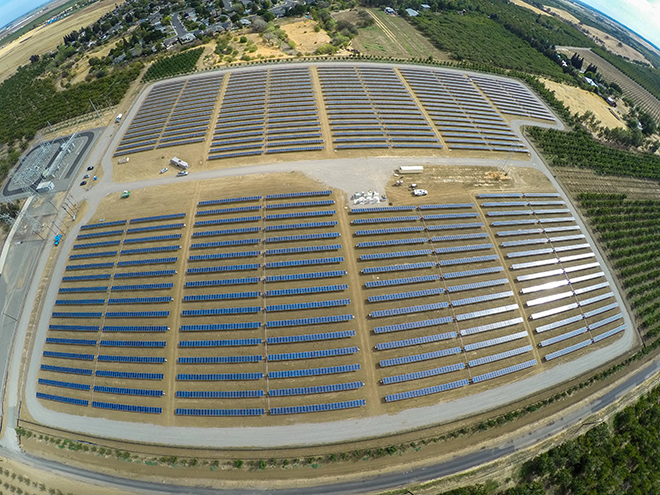S&P Global Offerings
Featured Topics
Featured Products
Events
S&P Global Offerings
Featured Topics
Featured Products
Events
S&P Global Offerings
Featured Topics
Featured Products
Events
Banking & Capital Markets
Economy & Finance
Energy Transition & Sustainability
Technology & Innovation
Podcasts & Newsletters
Banking & Capital Markets
Economy & Finance
Energy Transition & Sustainability
Technology & Innovation
Podcasts & Newsletters
S&P Global Offerings
Featured Topics
Featured Products
Events
22 Jan, 2021

| As a candidate, Joe Biden promised to accelerate America's adoption of clean energy resources. As president, many now expect him to do that. Source: Biden-Harris transition |
Governments, companies and investors around the world are at a critical crossroads in the race to eliminate global greenhouse gas emissions by midcentury in order to avert a climate catastrophe, according to Fatih Birol, executive director of the International Energy Agency.
While "absolutely not" confident humanity is up for this challenge, he is "hopeful," Birol said at Cleantech Forum San Francisco, held virtually from Jan. 19-21 due to the pandemic.
One of the reasons for that hope is new U.S. President Joe Biden and his clean energy commitment. As illustrated in just the first few hours of his administration, when Biden swiftly moved to return the United States to the Paris Agreement on climate change and initiated a sweeping review of Trump-era environmental and energy policies, the new White House is prepared to act fast.
Birol expects the Biden administration to send "unmistakable signals to investors around the world in order to provide strong momentum for ... clean energy innovation [and] technology penetration ... to reach our targets."
The three-day event, which started on Donald Trump's last full day in power and ended with Joe Biden inaugurated as America's 46th president and Democrats in control of Congress, highlighted the widespread belief that this new political reality presents an unparalleled opportunity to accelerate the country's transition to clean energy resources across all sectors of its economy.
"I really think we have got to treat this moment like the first year of the Roosevelt administration," said David Hochschild, chair of the California Energy Commission. "We should be aiming really big, go really bold. This is the moment for that."
Policy imperatives
As a candidate, Biden presented a $2 trillion infrastructure plan that featured major multisector clean energy investments and targets, including an ambitious goal for a nationwide zero-carbon power mix by 2035, a decade ahead of California's current mandate. Clean energy advocates have cheered that ambitious goal, even though some utilities are skeptical that Biden's timelines are realistic and cleantech analysts question whether there is enough resolve in Congress for major reforms.
"I need that big bold thing," said Abigail Ross Hopper, CEO of the Solar Energy Industries Association. "I need a big infrastructure package that prioritizes a green system."
"I believe this year, and the year after, there will be a historical leap in clean energy technologies, a leap that we have never seen in history," Birol said. "I feel it, from governments, from markets, from citizens and our numbers."
Global emissions, nevertheless, could still rise as economies recover from the devastating impacts of the COVID-19 crisis, adding urgency to the Biden administration's efforts.

| The Putah Creek Solar Farm in Winters, Calif. Solar projects are expected to fuel record global renewable energy additions in 2021. Source: Business Wire |
IEA is working with China, the world's largest emitter of carbon emissions, as part of its forthcoming global roadmap on reaching economywide net-zero emissions by 2050.
America's new leaders can help reach that target, said Birol, by investing in research, development and deployment of emerging technologies that are needed for deeper decarbonization, such as green hydrogen. Current commercial clean energy technologies like wind, solar and hydropower can only achieve around half of the emissions reductions required by 2050, he added.
'All around leadership'
BP PLC is preparing to do its part, said Dominic Emery, chief of staff at the London-based oil major.
Nearly a year after committing to achieving net-zero emissions by 2050, BP is making progress in its bid to transform itself from an international oil company into a fully decarbonized "integrated energy company," Emery said.
"The assignment that we see is ... the integration of electrons and molecules," he said. "So playing big in things like, for example, electrolytic hydrogen, could be really exciting."
Given that hydrogen from renewable energy resources today makes up only a fraction of hydrogen in use, mostly for oil refining and other industrial applications, some low- to zero-carbon hydrogen advocates are looking to the Biden administration for "moonshots."
"There will still be huge hurdles in order to deploy hydrogen at the scale we need," Emery said. That includes not only investing in infrastructure to store and move hydrogen but adding sufficient renewable energy resources to make hydrogen without carbon-based feedstocks.
By the end of this decade, BP plans to expand its renewable energy footprint to 50 GW, roughly 20 times its current installed base, building on joint ventures in the United States focused on solar power plants and offshore wind farms.
"We are seeing this very much as a substitution play of oil and gas for renewables, low-carbon energy, convenience and mobility, particularly electrification," the BP executive said. "I genuinely believe net zero is possible ... it's all around leadership."

